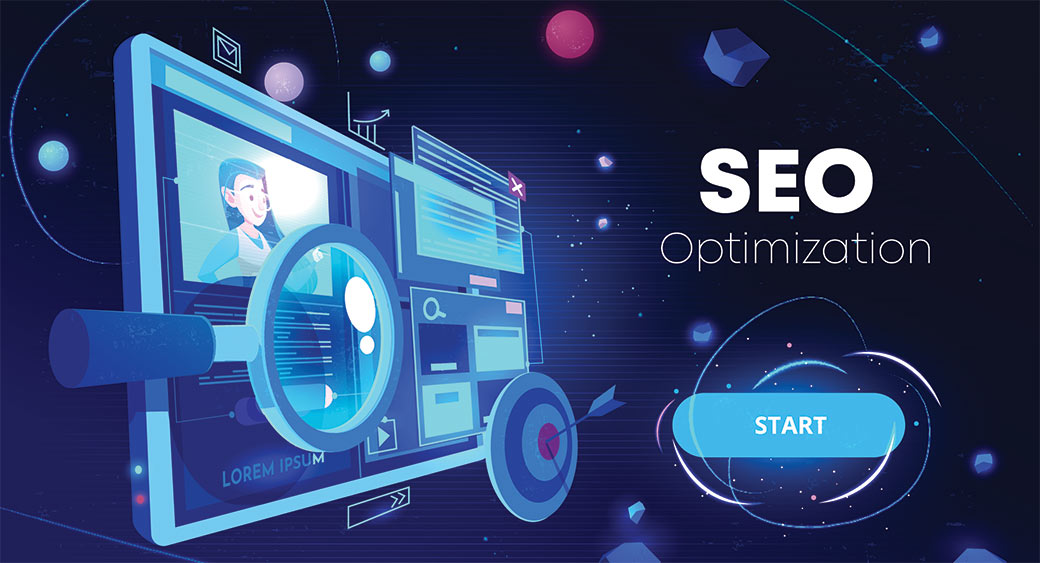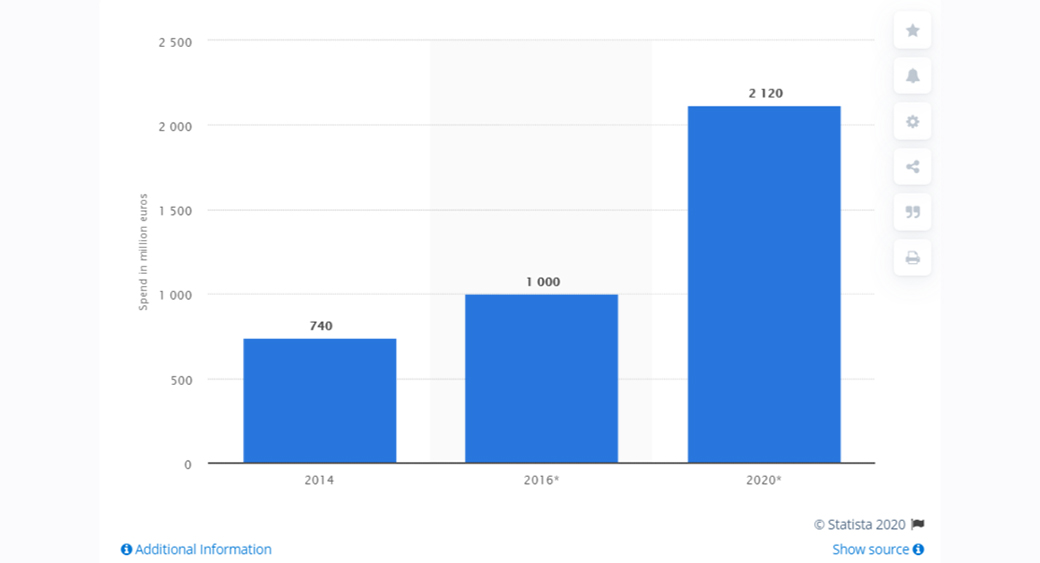The world of SEO keeps changing with the changes in the algorithms of Google crawlers, and the same is set as a benchmark over time to know the real best practice for SEO. Here, we’ll examine what EAT SEO is and find out the best practices, strategies, and tips for it.

With EAT SEO, Google set the bar high for websites and paved the way for many such websites to optimize their content for the three most important factors of Google’s EAT SEO updates.
- Expertise
- Authoritativeness
- Trustworthiness
With content marketing expenditure to reach 2.12 billion euros by the end of 2020 in Europe alone, you can gauge the amount of cost, businesses, and enterprises are incurring to optimize their content for audiences and Google crawlers. So, capitalizing on the google EAT SEO for better rankings is the need of the hour for every content crEATing a business out there!

Know What Is EAT SEO and Its Blueprint for Success
Whenever Google rolls out its core updates, there are certain changes to the algorithm that changes the way websites are indexed. In August last year, Google provided a document with its EAT SEO updates known as Search Quality Rate Guidelines (QRG).
Let us begin to understand the blueprint of EAT SEO updates to know the route to successful optimization of your content.
EAT SEO and YMYL Pages
E-A-T is considered most important for YMYL pages – Your Money Your Life pages: According to the Search QGR, below are regarded as the YMYL pages.
News and current events:
international events, business, politics, science, technology, etc. except articles on sports, entertainment, and everyday lifestyle.
Civics, government, and law:
Articles on information about voting, government agencies, public institutions, social services, and legal issues (e.g., divorce, child custody, adoption, crEATing a will, etc.).
Finance:
Financial articles on investments, taxes, retirement planning, loans, banking, or insurance, specifically web pages that allow users to make purchases or transfer money online.
Shopping:
E-commerce websites and other sites are offering online purchases.
Health and Safety:
Articles or content related to several medical issues, drugs, hospitals, emergency procedures, etc.
Groups of people:
Demographic information content or articles that may include a limited or maybe not information based on the grouped people by race or ethnic origin, religion, disability, age, nationality, veteran status, sexual orientation, gender, or gender identity.
Others:
Articles and content related to different aspects of human living like fitness, emotional quotient, etc.
EAT SEO, Content Types and Best Practices
According to Google’s SQGR, every website looking to optimize its website for the SEO based on Google’s core updates should look to bifurcate the content of the webpage into three major content types:
- Main Content-MC
- Supplementary Content-SC
- Advertisements-Ads
Now, let’s consider the best practices for each content type mentioned above.
Best Practices for MC
Here is the list of the best steps to take for MC optimization.
- Identify the main content on your webpages.
- Your main content is the one that automatically achieves the goal of your content crEATion.
- Find the targeted keywords and optimize them for your bidding.
- Keep the structure hierarchy to provide easy understanding and indexing.
- The images, pictures, videos, and others related to the main content should be optimized.
- Use phrases for demographic-specific audiences.
- Keep the keyword density as per requirement.
- Provide authoritative links and information.
- Never deviate from the ultimate concept you are on.
- Use appropriate headings and subheadings, such as H1, H2, etc.
Best Practices for Supplementary Content
Supplementary content is anything that supports the main content in achieving the purpose of crEATing web pages. These can be anything like navigation links or content behind the tabs. Webmasters tend to control the supplementary content due to its relative usage for enhancement of the user experiences.
Here are a few tips to improve your SC.
- Keep the supplementary UX optimized.
- Navigation links should be working correctly.
- Internal links and tabs should be optimized and checked through SEO tools.
- Content behind the tabs should be in sync with the main content.
- For e-commerce sites, product pages should possess all the product information.
- In the case of Videos or images, optimize both for better loading speeds.
- Supplementary content should not provide lagging in load times of page.
Best Practices for Ads
Advertisements or monetization tools like forms, subscription tabs, downloads, or others provide revenue to websites. These are essential to websites as MC or SC. Many websites need monetary support to survive.
You can follow this advice to make your ads content better.
- Google is advising to avoid ads or interstitials that can detract users.
- Keep Ads to be organic through backlinking your blog pages.
- Make mobile-friendly ads by avoiding compulsory interstitials.
- Keep the content of Ads/monetization to be in sync with SC and MC.
- The visual impact of the Ads should not be a distraction.
Now that we have encountered the blueprint of EAT SEO let us strategize your website for the same.
EAT SEO and Resource Optimization
The first and most useful strategy for google EAT SEO is keeping the resources to be reputed, and the crawlers identify the same. As per Search QGR, Google is looking for experts and professionals related to content to be the authors. Any possible attempt by website owners or content crEATors to hide the author’s true identity can keep your content from indexing high in the search engine result pages.
How Can You Strategize Your Resources?
Let us see this on the heuristic base for all your content on the website!
First, what Google wants from you is high EAT content, and how you can deliver it on your pages will determine your page rankings and keep your traffic intact.
So, for example, imagine a carpenter offering nutrition advice to you or a cab driver offering swimming classes! Looks out of place or context? The same is what Google wants from you to assert expertise by content from the people with expertise in the relevant field.
So, the first EAT strategy is crEATing an expert author profile for your content that you can credit for the crEATion of content and specifically MC(Main Content) that is mostly on the homepage.
It can also help websites improve their organic content. As the content comes from an expert, establishing thought leadership comes naturally through the content. Experts can further enhance the product knowledge of your audiences for higher engagement and expertise.
Then there are exceptions for people with relevant experience on products or reviews on the product performance or fEATures. These are deemed experts by Google crawlers and are not considered bad.
But, the best practice is to find unique content crEATors with enough experience or expertise in the topic!
Pages that E-A-T
When you are strategizing your website to bEAT the EAT SEO updates for Google to come up with webpages strategy that can make the google crawlers index your pages higher.
- FEATure your main content on the homepage.
- Keep the other pages in order and link.
- Use proper CTAs and links that do not crash.
- Place the keywords organically.
- Keep the payload document to be minimal.
- Update the pages with the crEATor of the main content and company information.
- Establish expertise, trustworthiness, and authority of content crEATor.
- As the reputation of a website depends on the crEATor’s EAT, optimize the page.
- The low-quality main content can lead to non-indexing.
- Keep the distracting ads minimal and never disguise your ads as MC.
The Convicted Copy
Whether its SEO or marketing, copying your content from others is the conviction you can never get away with! And when it comes to Google EAT updates, they mention this as a felony that in any form. So, what should you avoid?
Three types of content copy that EAT SEO updates define:
- Exact Copy
- Tweaked Copy
- Dynamic Copy
Let us see this by example. Suppose there is an article or main content on what is EAT SEO?
One website takes content on “Expertise,” “Authoritativeness,” and “Trustworthiness” from different websites. Then pastes these content patches in a single page- This is called the “Exact Copy content.”
A website that uses an already written content on what is EAT SEO and changes its words to avoid exact copy is better known as “Tweaked Copy Content.”
The third kind is a little complicated, like many websites or content crEATors copy content from the dynamic content that keeps on changing and updating. These content are considered “Dynamic Copy content.”
Page Security
Keeping the pages to be secure, non-spammy, and continuously updated is essential for EAT SEO. Negative SEO and pages that are malicious, unmaintained, and abandoned are the “kryptons” of your super-content. Strategizing for page security and updating is vital to keep up with Google EAT SEO updates.
Other important tricks to ensure page security are:
- Keep your pages and website free from malicious elements.
- The website should be secured by high-end cybersecurity to avoid blacklisting.
- Information on the pages should be accurate.
- Links on the pages should not be spammy or linked to internet fraud.
- The page content should not have irrelevant information.
Auto-Generated Content or UGC:
Auto-generated content is content used by some websites from RSS feeds and APIs for crEATing the website in no time. These are lousy content as per Google search guidelines.
UGC or user-generated content is the content generated by users that visit your website. UGC needs close monitoring and regulation to ensure its compatibility with the google EAT SEO updates.
Mainly, the YMYL pages that provide information relative to the medical or fitness niche as users that mostly add their content on such pages are not necessarily an expert. It also helps content curation and improvisation of the content quality for crawlers to find it organically.
Achieving FM and HM
FM or Fully Meets and HM or Highly Meets special rating categories defined in EAT SEO that websites can leverage to get better SEO. Fully Meets is like a signboard saying, “here it is!” Whenever a user asks a query on the search bar of a website or the search engine, the content that exactly matches the results required by the user is rated as Fully Meets web pages or websites.
Here, the user is specifically looking for any particular website or webpage and gets the same through a search. So, you should crEATe and design your content for FMs while Highly Meets are the results that meet the needs of many or most users and have a span vaster than FMs.
For HM, your pages must contain exact information and accurate data that users are looking for. Further, your statistical data on the web pages must be valid.
Be Local
Mobile-friendly websites and apps are the prime requirements for higher rankings through crawlers as mobile app development has been the pivotal technology shift in the recent past.
To keep the mobile experience of content and search results in more enhanced google EAT SEO updates, provides extensive guidelines on content blocks and landing pages that cater to the local queries of users.
Your web pages need to offer local information asked in the queries by users. EAT has emphasized on the particular and user location by apps and websites for higher mobile-friendly ratings. How a user submits the query and how information is achieved by device action is looked upon.
Rating guidelines are not too much changed for websites even on mobile as the access to essential content remains at the epicenter of ratings and user experiences. So, all the above strategies and tricks must be realized and optimize webpages for a better mobile experience.
EAT SEO – Signing Off
EAT SEO remains the prime concern for many website owners and marketers. With the only question that is asked today, by many marketers- what is EAT SEO? It surely needs proper realization and strategy to counter the core update by Google.
There is no denying to the fact that most of the SEO experts and marketers follow these updates, while some differ with an argument that as the algorithms and core updates keep on changing, EAT can’t be taken too seriously.
Regardless of the belief and disbelief in what is EAT SEO and how it can affect website rankings? As a business or website owner, your goal is to achieve higher rankings and when Google – one of the giants among search engines, says how to do it? Then you must follow to get to new heights!
